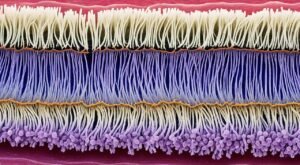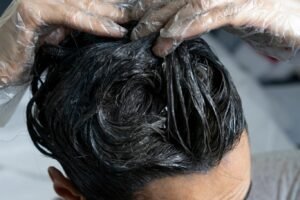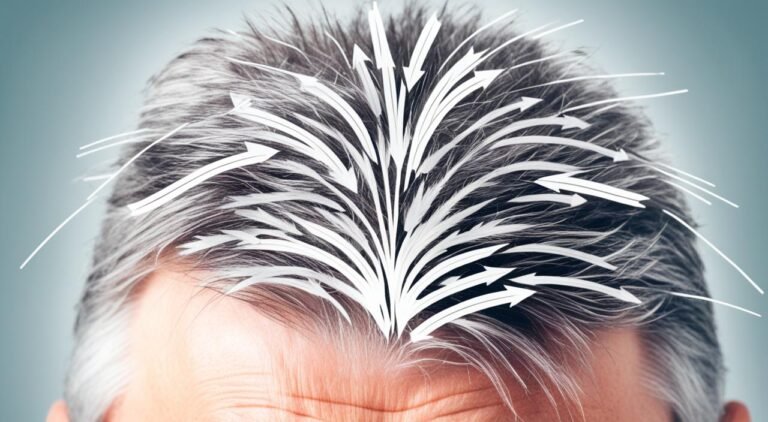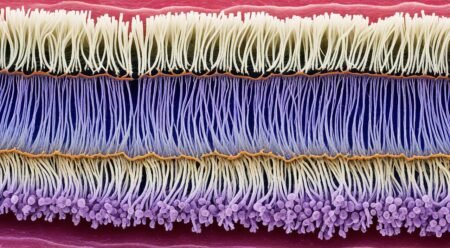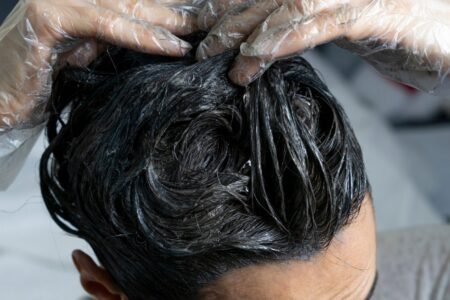Have you ever wondered why your hair seems to be thinning more than usual or why you’re finding more strands on your pillow and in your brush? The truth is, hair loss can be a complex issue with numerous causes ranging from genetics to lifestyle factors. While it’s normal for individuals to lose up to 100 hairs daily, seeing excessive shedding can be alarming and may indicate underlying issues.
Hair loss, or alopecia, can affect just the scalp or the entire body and may be temporary or permanent. It can result from genetics, hormonal changes, medical conditions, or aging. Hair loss is more prevalent in men, but women can also experience it, often notably where they part their hair or on the top-central portion of the head. Sudden hair loss can signal an underlying medical condition that may require professional consultation. On average, people lose 50 to 100 hairs daily, which is usually replaced by new growth. When shedding outpaces growth, visible hair thinning occurs. Factors contributing to hair loss include hereditary conditions, hormonal changes like pregnancy or menopause, medical conditions like alopecia areata, scalp infections or trichotillomania, medications, stressful events, and certain hairstyles or treatments.
Key Takeaways
- People typically lose 50 to 100 hairs daily, a normal part of the hair growth cycle.
- Androgenetic alopecia is a common hereditary cause of hair loss in both men and women.
- Hormonal changes, medical conditions, and medications can contribute to excessive hair fall.
- Lifestyle factors such as stress, diet, and hairstyling habits play a significant role in hair shedding reasons.
- Hair loss solutions often include addressing underlying conditions and adopting hair care techniques.
Understanding Hair Loss: An Overview
Hair loss, a condition affecting various individuals, takes on numerous forms and levels of severity. It can impact just your scalp or extend to your entire body. Anyone can experience hair loss, although it’s significantly more common in men. Additionally, while some may encounter gradual thinning, others may face sudden, extensive loss. To better understand this complex issue, let’s closely examine its definition and who might experience it.
Defining Hair Loss and Its Types
When we define hair loss, we look at both its temporary and permanent forms. Baldness, which entails excessive hair loss from the scalp, is one of the most recognizable types. Mainly, male-pattern baldness starts at the hairline or top of the head, eventually leading to partial or complete baldness. Female-pattern baldness, conversely, involves progressive scalp hair thinning, especially at the part and crown.
Alopecia areata, a type of alopecia, presents as sudden, patchy hair loss with circular bald patches. Traction alopecia results from wearing tight hairstyles like pigtails or braids. More severe examples include frontal fibrosing alopecia, mainly affecting older women. These diverse types of alopecia illustrate the broad spectrum of hair loss conditions one might encounter.
Who Can Experience Hair Loss?
The question of who experiences hair loss has a broad answer: practically anyone. Both men and women are susceptible, though it’s more common in men due to genetic predispositions like androgenetic alopecia. Women, on the other hand, often face conditions influenced by hormonal changes such as menopause or postpartum shedding.
Other contributing factors include medical conditions like alopecia areata, thyroid problems, and trichotillomania. Furthermore, certain medications for cancer, arthritis, or high blood pressure could lead to permanent hair fall. Stressful events and dietary deficiencies can also trigger hair loss, highlighting the multifaceted nature of this condition.
In conclusion, understanding that anyone can experience hair loss and knowing the types of alopecia helps us better prepare and seek appropriate solutions. Recognizing the signs early and consulting a healthcare provider empowers individuals to manage and potentially mitigate hair loss effectively.
Common Causes of Hair Loss
Understanding the prevalent causes of hair loss is crucial to addressing this widespread condition effectively. The factors range from genetic predispositions and hormonal imbalances to medical treatments and lifestyle choices.
Genetic Factors and Hereditary Conditions
One of the most common causes of hair loss is genetic hair loss, also known as hereditary alopecia. Male-pattern baldness, characterized by hair thinning at the hairline or on the top of the head, and female-pattern baldness, which often begins with a gradual decrease in hair density, both stem from genetic factors. Family history plays a significant role in these types of hair loss, with androgenetic alopecia being the leading cause globally.
Hormonal Imbalances
Hormonal causes of hair shedding are also significant. Conditions such as pregnancy, childbirth, menopause, and thyroid problems can lead to temporary or permanent hair thinning. For instance, many women experience noticeable hair loss about three months post-pregnancy due to shifting hormone levels. Similarly, during menopause, the drop in estrogen and progesterone levels can result in increased hair loss.
Medical Conditions and Treatments
Several medical conditions can trigger hair loss. Alopecia areata, which can cause patchy hair loss usually in circular bald patches, and scalp infections like ringworm are prominent examples. Moreover, hair loss from medical conditions can be exacerbated by treatments like chemotherapy, which often leads to temporary hair thinning known as anagen effluvium. Other medications can induce hair fall, highlighting the impact of medication-induced hair fall.
Lifestyle and Environmental Factors
Lifestyle-induced hair thinning is another considerable factor. Stressful events can lead to conditions like telogen effluvium, causing sudden hair shedding. Diets low in essential nutrients like protein and vitamins can also result in excessive hair loss. Furthermore, certain hairstyles, especially tight ones like pigtails, braids, or cornrows, can lead to traction alopecia. Environmental hair loss triggers, including sun exposure and pollution, also play a role in the health and strength of our hair.
Symptoms of Hair Loss
Recognizing the early signs of hair loss is crucial for timely intervention. Typically, people lose 50 to 100 hairs a day, making minor hair thinning symptoms natural and usually insignificant. However, noticeable hair thinning symptoms could signal an underlying issue.
Gradual thinning on top of the head is a common sign of aging-related hair loss, affecting men and women differently. Men may experience male-pattern baldness, characterized by receding hairlines or bald spots on the crown, which is typically caused by genetic and hormonal factors. On the other hand, women might notice a broadening part or overall thinning – signs of hair loss often linked to hormonal changes, especially post-menopause.
Alopecia areata, an autoimmune condition, manifests through sudden patchy bald spots. Other patchy bald spots can result from physical or emotional shocks, causing sudden hair shedding. Telogen effluvium, another condition, keeps hair in the shedding phase longer, leading to excessive hair loss that tends to resolve over time.
Scalp symptoms like redness or scaling accompanied by hair breakage could indicate a fungal infection such as ringworm. In some severe cases, chemotherapy or other medical treatments may lead to full-body hair loss indicators, but this is often temporary and reversible.
Addressing the hair thinning symptoms early through gentle hair care practices, vitamin supplementation, and medical consultation can help manage and potentially reverse the process. Considering that genetics play a significant role in hair loss, it’s essential to recognize the symptoms and take preventive measures to mitigate their impact.
| Hair Loss Symptom | Possible Cause |
|---|---|
| Gradual thinning on top of the head | Aging, hereditary conditions |
| Patchy bald spots | Alopecia areata, physical/emotional shock |
| Sudden hair shedding | Stressful events, telogen effluvium |
| Scalp redness or scaling | Fungal infections, such as ringworm |
| Full-body hair loss | Chemotherapy, medical treatments |
Why Am I Losing So Much Hair?
Understanding the nuances between daily hair shedding and abnormal hair loss is crucial for addressing hair-related concerns. While it’s normal to lose up to 100 hairs daily, noticing consistent and significant changes in hair volume may signal abnormal hair loss.
Daily Hair Shedding vs. Abnormal Hair Loss
Daily hair shedding is a natural process, with most individuals losing between 50–100 hairs each day. However, abnormal hair loss, such as abrupt thinning of hair or the appearance of bald patches, can be indicative of underlying issues. It’s important to monitor these patterns to determine if further action is needed.
Patterns of Hair Loss in Men and Women
Male-pattern baldness often manifests as a receding hairline and bald spots, whereas female hair thinning patterns typically present as widening of the part or diffuse thinning across the scalp. Recognizing these male hair loss patterns and female hair thinning patterns helps in diagnosing and addressing the issue early.
When to Consult a Doctor
Persistent or sudden changes in hair volume and coverage may necessitate a medical consultation for hair loss. Conditions like alopecia areata, telogen effluvium, or anagen effluvium, alongside factors like nutritional deficiencies or scalp infections, warrant professional evaluation to determine the appropriate course of treatment and halt further loss.
Diagnosing the Cause of Hair Loss
Understanding the underlying reasons for hair loss is integral for devising a suitable treatment. Typically, people lose 50 to 100 hairs a day. However, when shedding outpaces regrowth, it’s imperative to seek a medical evaluation of hair fall. Our approach starts with a comprehensive medical history and a meticulous physical examination of the scalp and hair.
For a thorough hair loss diagnosis, healthcare providers often employ a combination of diagnostic techniques. Blood tests can reveal hormonal imbalances or nutritional deficiencies, which are common culprits behind hair loss. Scalp biopsies assist in examining the hair follicles more closely, providing insights into conditions like alopecia areata or infections. Dermatologists may also use computerized measurement tools to magnify the scalp’s appearance up to 100 times, enhancing the accuracy of the examination.
Additionally, pull tests involve gently tugging sections of hair to determine if there is active shedding. If six or more strands are pulled out easily, it indicates active hair loss. Another method, the card test, evaluates hair shaft health and new hair growth, aiding in detecting abnormalities like telogen effluvium. By identifying the precise causes through these methods, we can formulate an effective treatment strategy, potentially including treatments like Minoxidil, and prevent further hair loss.
